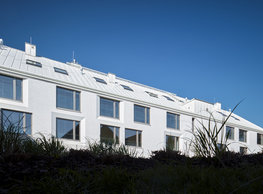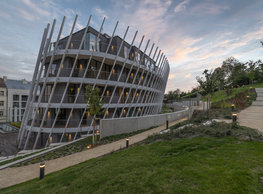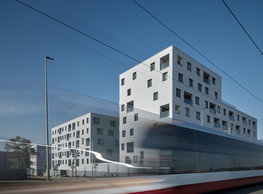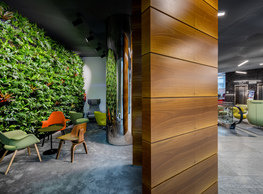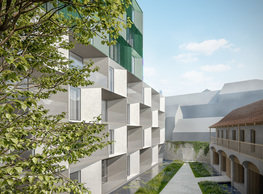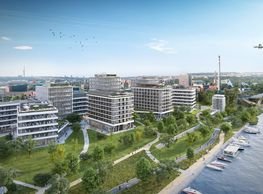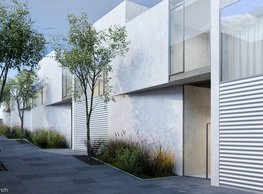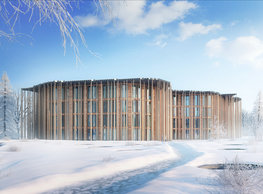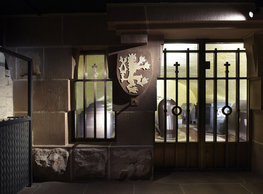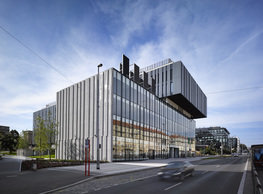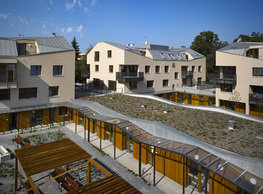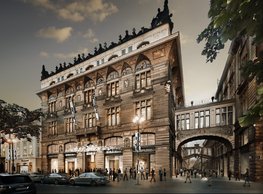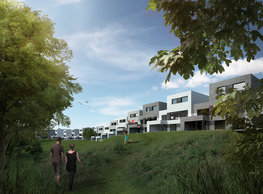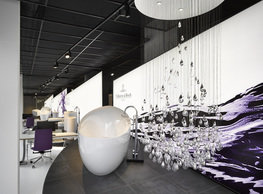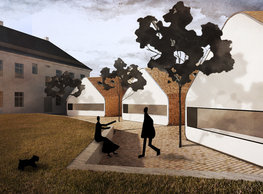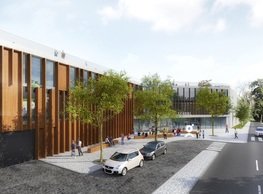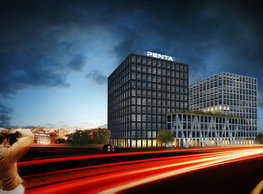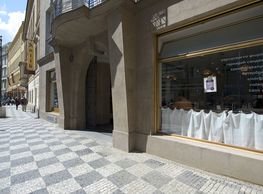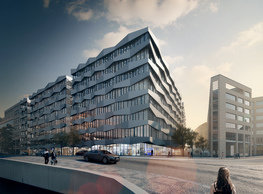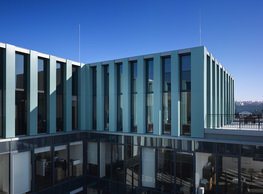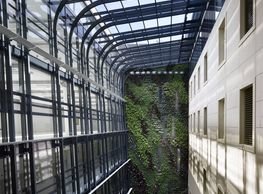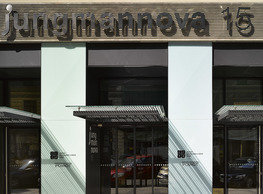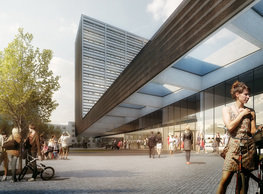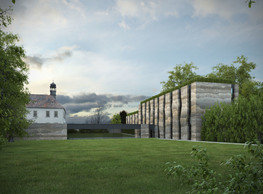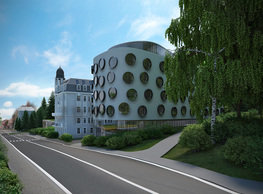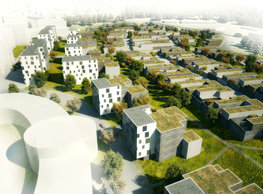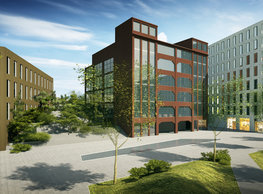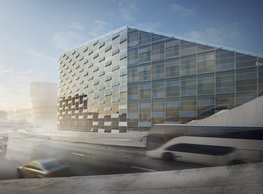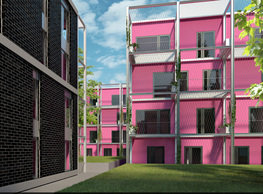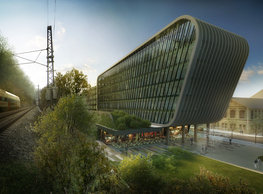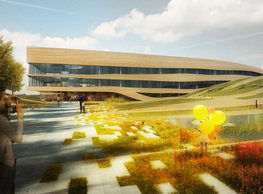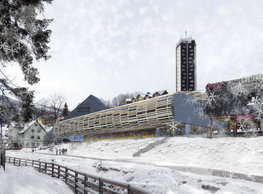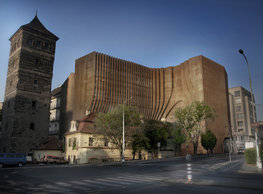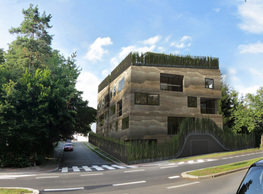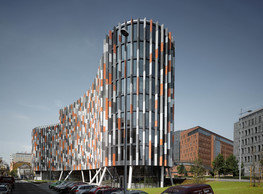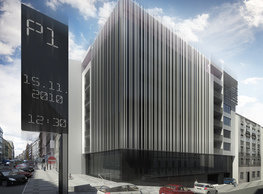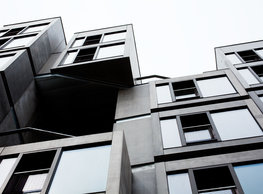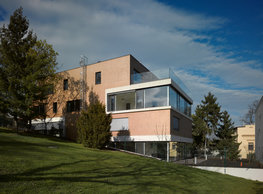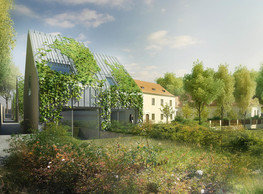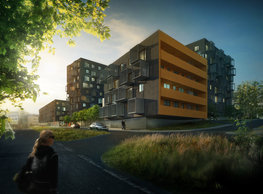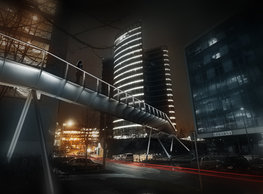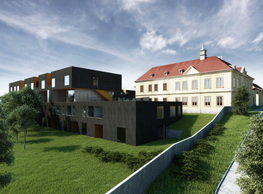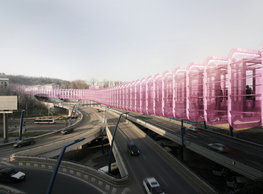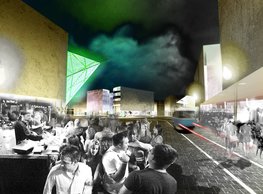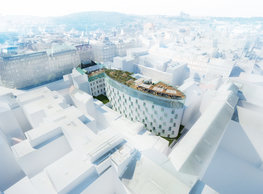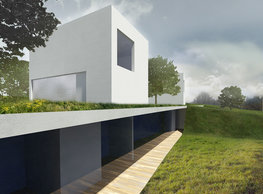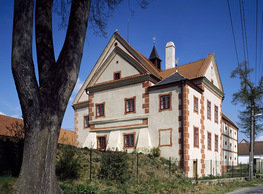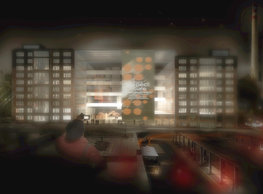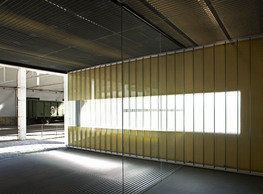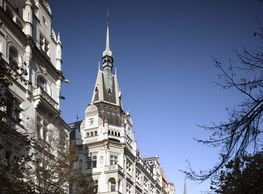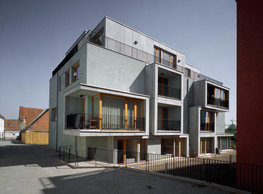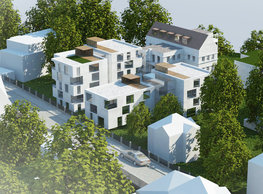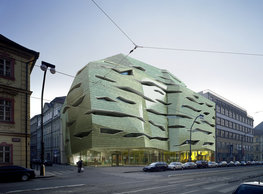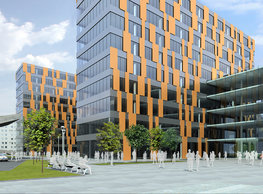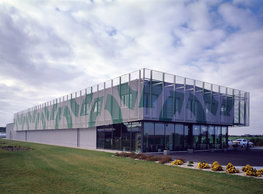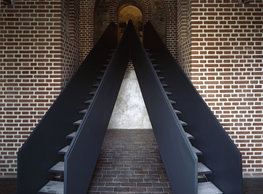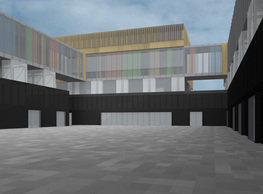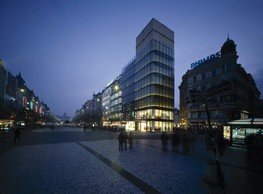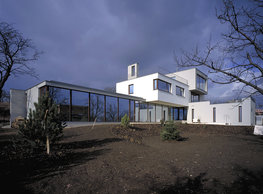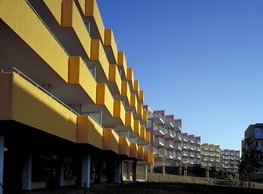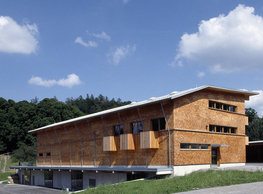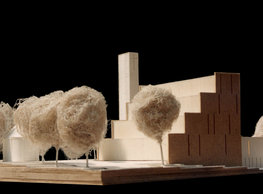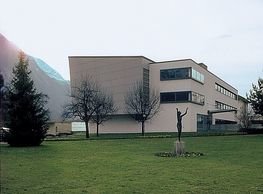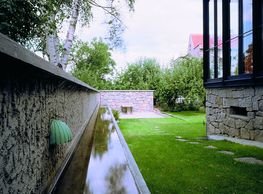The place where this project should be built is flat; the junction of the Morava river and Mlýnský potok (creek) delineates its wedged shape. From the town planning perspective, the site enjoys the benefit of several important positives. Although it is outside the central zone of the town, the site is very close to it; it is very well connected to the municipal traffic network. Even the brief describes a particular situation when a belt of the municipal park runs through the place, and the site itself is part of a large flood plain on the bank of the Morava river. We believe that good urbanistic design does not a priori build on the architecture of buildings, but on the structure of social relations. The cornerstone of the urbanistic structure of our design is groups of houses – nests. Detached houses are arranged in three blocks above a common underground car parking with technical amenities. Spaces between them are designed so that they establish a semi-public intimate open courtyard where people know each other and feel its atmosphere as their home. A network of paths runs among groups of houses and private gardens made larger at junctions to allow neighbourly encountering. Paths are not closed; however, to use them, that is to leave the ´category one´ paths (see the previous text) means to make a step and get up to the level of raised private front gardens. Small semi-private squares are placed among houses. A central public square is designed in the centre of the plan, at the junction of pathways and other access roads to the compound. It is a typical urban concept we want to reapply here. We are talking about a square as a space for encountering, organising events, and activities, as a crossing of roads introducing the atmosphere and life into the town; a space for placing artworks, or a fountain, organising markets or cultural events. Site gaps naturally occur between the structure of houses and along it. This way, public areas are established where children’s playgrounds (northeast part) and fitness zones (east side, the Morava river bank) can be built. A concentrated development allowed freeing the south tip of the site at the junction and designing a relaxation meadow and a natural beach with trees here. We understand the layout scheme and architecture of the houses as mutually inseparable basic parameters. The inherent idea forming both of them is a design of one type of a house featuring a ´modular´ layout of a storey; its simple shape would change depending on the point of view, yet remain the same in its structure and layout. If we make such houses different by the number of their stories and the angle of rotation to the observer, the will seem not monotonous. They will be identifiable as individual structures and this way established compositions of groups of houses would be variable, not drab at all. The leitmotiv of the design’s architecture is an irregular octagon that will aside from the above-specified qualities, allow clustering of the houses; or connecting the houses establishes an illusion of a different type of construction (a ´rectilinear´ development along the west border of the land). An irregular shape is good for also the distances between buildings that would otherwise have to be much longer at many places. A strong tectonics is supported by a simple graphic design of the envelope and the fenestration, or the loggias. Contrary to the nonconformist tectonics of the buildings’ volumes, their layout is rather traditional. Houses with four or five aboveground stories have a vertical circulation core with a staircase and a lift shaft in the centre. A patio bringing daylight inside is located next to this core. There are always four flats designed on the ground floor and typical stories. Their structure and category result from the brief. The topmost, highest stories are allocated for high-comfort flats. There are two 3- and 4-bedroom flats here, both with large terraces. Flats on the ground floor have front gardens accessed straight from the interior. In compliance with the brief, they are raised in comparison with the outdoor public areas and roads/walkways. There are car parks in the basement below, always one shared by several houses. Clustering is economical; it allows having fewer entry ramps, and it minimises lengths of access roads
portfolio
![]()
monastery of st. gabriel
![]()
nová zbrojovka block g
![]()
nad krocínkou a
![]()
nad krocínkou b
![]()
dobřichovice farmstead
![]()
nymburk train station
![]()
stará boleslav primary school
![]()
holečkova 26 residence
![]()
komořany elementary school
![]()
kindergarten jeseniova
![]()
nová elektra residence
![]()
filadelfie bldg. – the new reception
![]()
písnice elementary school
![]()
bytové domy vítězná/újezd
![]()
afi vokovice
![]()
showroom elite bath/bulthaup sk
![]()
port 7
![]()
main point pankrác
![]()
oktáva houses
![]()
lesy čr headquarters
![]()
royal tomb
![]()
the blox
![]()
dob centre in dobřichovice
![]()
contemporary glass muzeum
![]()
pod hády brno
![]()
elite bath showroom karlín
![]()
communal flats in dolní břežany
![]()
šantovka residence
![]()
open gate II
![]()
ružinov office building
![]()
dlouhá palace
![]()
vinohradská 8
![]()
masarykovo railway station
![]()
retail and office development
![]()
jindřišská 16
![]()
jungmannova 15
![]()
regina hradec králové
![]()
chateau dolní břežany
![]()
the metropole hotel in mariánské lázně (marienbad)
![]()
waltrovka
![]()
square mechanica
![]()
porto mercandini
![]()
plzeňská 18
![]()
vrchlického residence
![]()
karlín railway
![]()
science research centre
![]()
sněžka apartment house
![]()
novomlýnská brána
![]()
jeremenkova residence
![]()
main point karlin
![]()
flat b3 prague
![]()
štěpánská 47
![]()
tenement house with a gym
![]()
švédská residence
![]()
hendlův dvůr
![]()
klamovka residential complex
![]()
botanica vidoule phase 6
![]()
footbridge in bb centre
![]()
perníkářka manor
![]()
municipal interventions prague 2010
![]()
černá louka ostrava
![]()
evropa hotel
![]()
bb centrum filadelfie
![]()
family houses in radotín
![]()
cherubín II
![]()
fc bohemians praha 1905
![]()
ostrolovský újezd chateau
![]()
zlín cultural centre
![]()
znojemská hospice
![]()
pilsner urquell
![]()
st. wenceslas exposition
![]()
institute of noblewomen
![]()
karlov office building
![]()
cherub I
![]()
pařížská 9
![]()
jinonice villa park
![]()
petynka hotel
![]()
sanopz residential complex
![]()
viktoria center pankrác
![]()
hotel crystal palace
![]()
invalidovna offices
![]()
performing arts center seoul
![]()
boscolo carlo IV hotel
![]()
toner recycling company building
![]()
the story of prague castle
![]()
umprum in prague-ďáblice
![]()
mrázovka apartment villa
![]()
school gym in prague-troja
![]()
roma hotel
![]()
euro palace
![]()
ten centuries of architecture
![]()
villa třešňovka
![]()
velká skála
![]()
sternberg palace prague castle
![]()
st. nicholas church in čečovice
![]()
olga and václav havel's villa
![]()
tierpark langenberg
![]()
a church in neratovice
![]()
school centre interlaken
![]()
forestry school in lyss
![]()
villa dobeška
![]()
tuscany in maps




